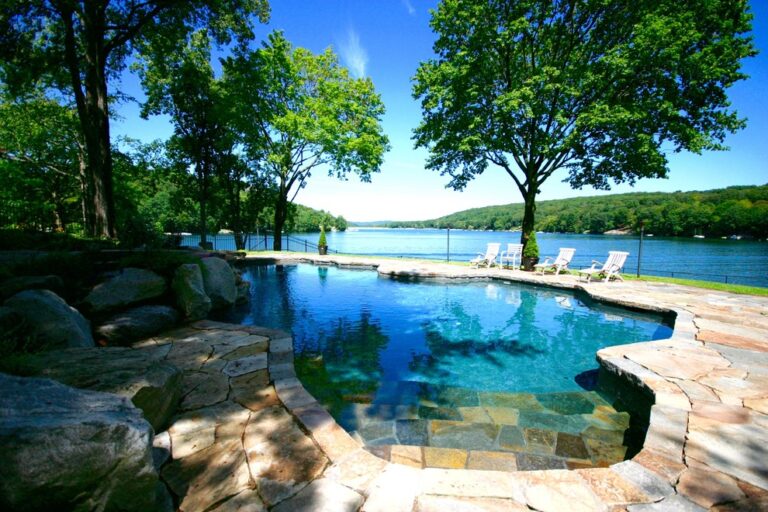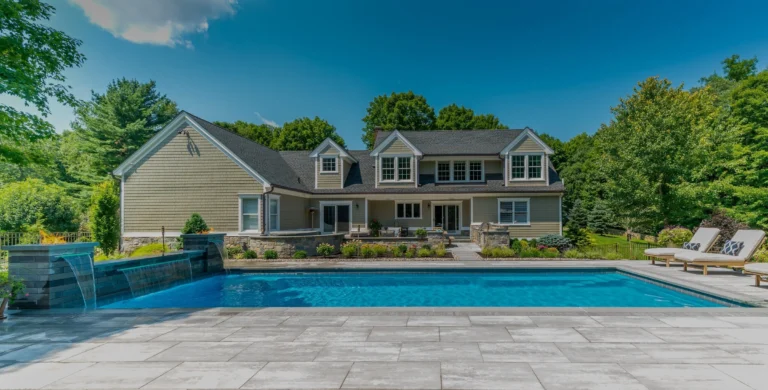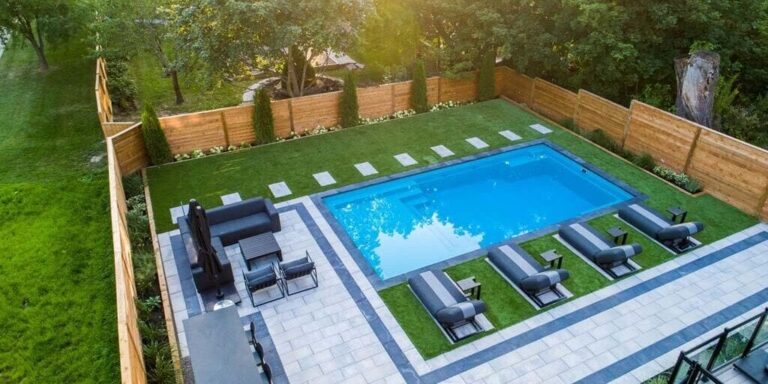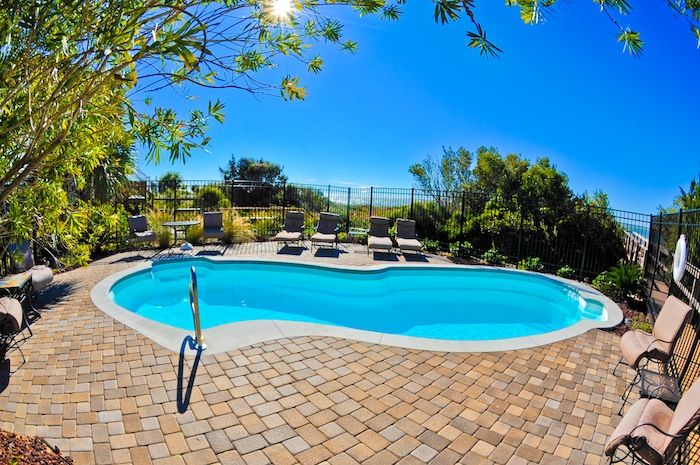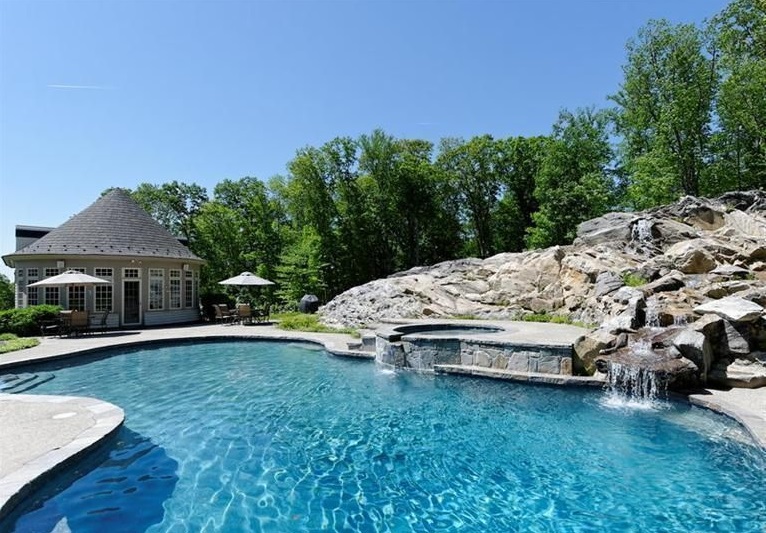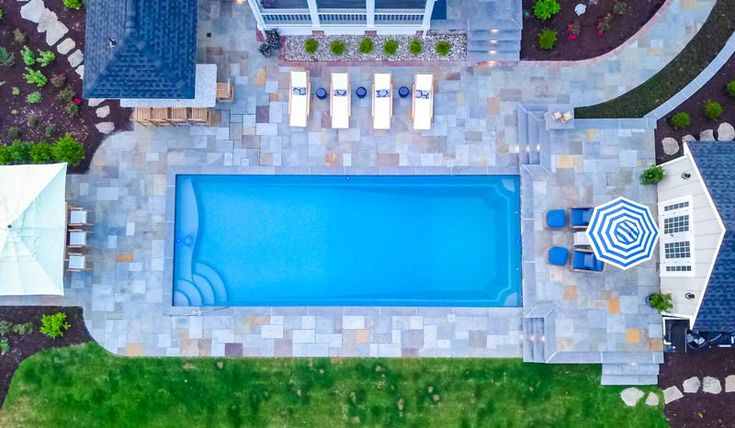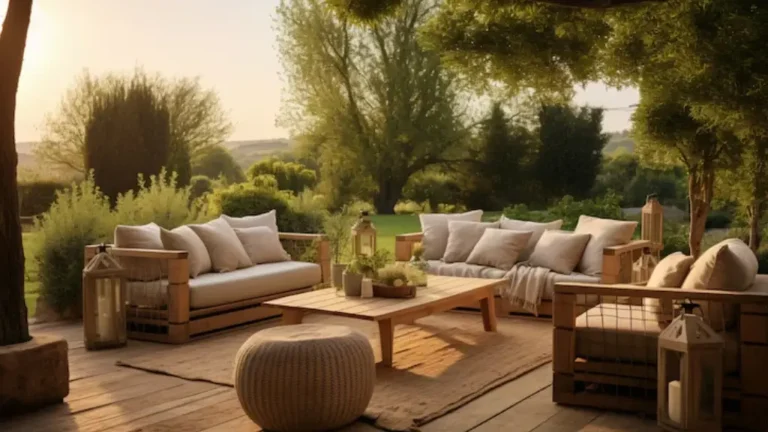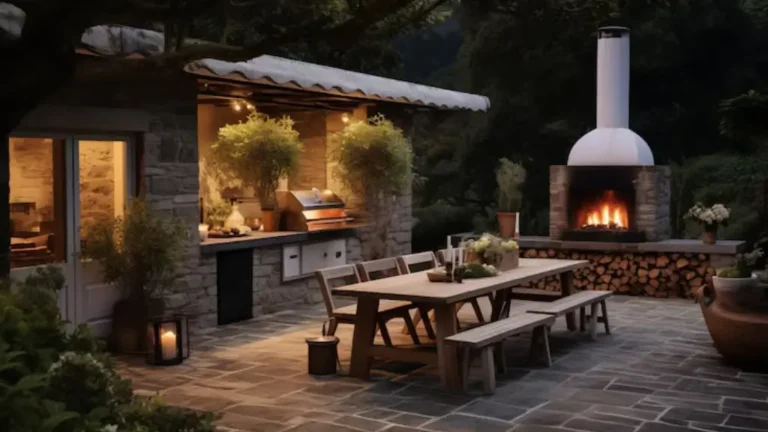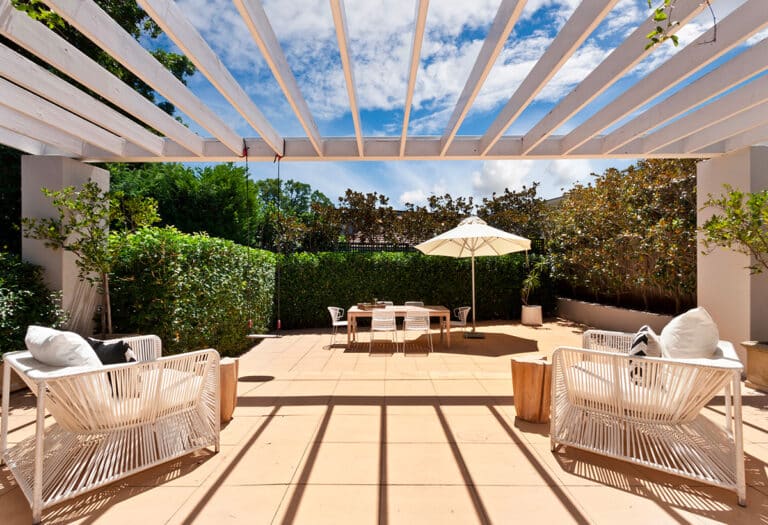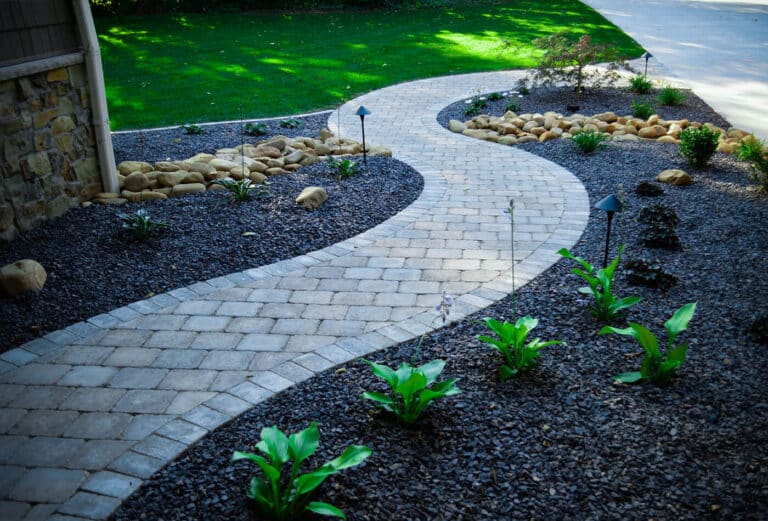Are you planning to transform your backyard into a summer oasis with an inground pool? Inground pool installation can lift up your outdoor space and provide countless hours of enjoyment for you and your loved ones.
Before you hop, consider various elements to get your desired pool construction. With Coast Pools and SPAS, your vision is just a splash away!
Here’s essential information to guide you through your inground pool installation journey.
What is an Inground Pool?
An inground pool is a permanent feature designed to be built into the ground, providing a stunning centerpiece for your yard. Available in numerous types, shapes, depths, and sizes, inground pools offer the ultimate customization options to match your style and preferences.
Inground pools are typically constructed from popular materials like concrete, fiberglass, and vinyl, each with its own pros and cons. Installing an inground pool usually takes two to three months, but the timeline can vary based on several factors.
The type of pool, its size, depth, and any special customizations you choose can all influence the construction timeline. Dream big, and let Coast Pools and SPAS help bring your backyard paradise to life!
When is The Best Time To Install Inground Pools in NY?
In Dutchess and Ulster County NY, the greatest time to install an inground pool is usually in the fall, right after the hectic summer months. The pool will be ready for use as soon as the weather heats up in the spring, and more contractors will be available, which could result in lower rates. You will have a ready-made pool and perhaps save money, even though you won’t be able to use it right away.
Here’s why October is a favorable season.
- Greater Availability of Contractors
- Possible Savings
- Dry Terrain
Things to know before Starting Pool Construction
#1 – Deciding on Pool Types, Designs & Features
Selecting the appropriate pool type with right size and features is the first step in installing a residential pool. Whether your goal is to entertain, relax, or increase the value of your home, choosing the right style lays the groundwork.
Common Pool Types
Inground pools – The best option for an appealing backyard look. They are perfect for custom designs and long-lasting construction, offering complete flexibility in shape, size, and features.
Above-ground pools – More affordable option; they are easier to install and can be moved if necessary.
Concrete Pools – Concrete pools, which are made on-site using gunite or shotcrete, provide unparalleled durability and architectural flexibility.
Pools lined with fiberglass or vinyl – These prefabricated shells are easier to construct and frequently less expensive. Excellent for smooth, geometric patterns.
Design Considerations
Shape – Pick from traditional rectangles, kidney-shaped, oval, or freeform curves; each has an effect on space usage and appearance.
Size & Dimensions—Consider the pool’s intended use. Oversized patterns are ideal for families or regular visitors, while standard sizes are suitable for casual use.
Depth – Consider both function and safety. Deeper ends allow diving, while gradual slopes are kid-friendly.
Features:
Spas & Hot Tubs – Jetted integrated soaking places are ideal for unwinding and boosting the value of your house.
Water Features – Waterfalls or fountains add aesthetic value and produce calming background noise.
Lighting – With underwater LEDs, you may transform your pool into a relaxing or entertaining space at night.
#2 – Local Council and Legalities
Local laws must be followed throughout your project, from submitting development applications to comprehending pool fencing specifications. You may avoid future hassles and make sure your swimming pool satisfies all legal safety requirements by getting in touch with the local municipality as soon as possible.
The shell, machinery, and drainage are structural elements that must adhere to building codes. Some places have use restrictions, so check the zoning regulations. Be prepared to pay registration, inspection, and application fees.
#3 – Which Inground Pool Type Is Easiest to Install?
Let’s compare different pool-type installation processes.
Installing Vinyl inground Pools Takes 4–8 Weeks
If you want an inground pool installed as quickly as possible and for the least amount of money up front, a vinyl pool might be your best option. However, compared to other pool options, you must extend your budget for higher long-term maintenance and upkeep expenditures and give up some amenities.
Depending on the site’s characteristics and the local environment or weather, installing a vinyl liner pool typically takes four to eight weeks.
Gunite Pools: 8-12 Weeks to Install
Among three alternatives, installing a gunite pool is the most complicated, customizable, and time-consuming; it usually takes three months or more. However, there is a higher cost associated with enhanced personalizations and unique adaptations, as well as ongoing maintenance to consider.
Gunite needs to cure for a few weeks following application for the concrete to solidify and harden before interior finishes and waterproof plaster are applied. It takes eight to twelve weeks to finish a gunite pool.
Fiberglass Pools: Average 3 Weeks to Install
Fiberglass pool decks with a smooth gelcoat finish are safe and comfortable for family members’ feet, even dogs’ paws, and won’t catch swimsuits. Contemporary fiberglass pools come in a variety of sizes, styles, and architectural options, are resistant to algae, and have a non-skid surface that helps reduce slips and falls.
Instead of building vinyl liner and gunite pools on-site, pre-formed fiberglass pool shells are manufactured at a facility using a mold.
# 4 – Which Inground Pool Type Is Best for Durability, Maintenance, & Lifetime Cost of Ownership?
Pools made of fiberglass, vinyl, or Gunite have special qualities that influence how long they last and how often they need to be maintained.
Vinyl Liner Pool Durability and Lifespan:
Lifetime considerations: Our network of builders says vinyl pools last about 25 years. This inground pool is highly rated for its size, form modification, and initial installation expenses.
Repair Considerations: Vinyl-lined pools require a full liner replacement every five to fifteen years, which can cost around $3,000 to $7,500, or more if the pool has a bigger or more distinctive freeform design.
Gunite Pool Durability
Lifespan Considerations – Gunite pools might not be the most resilient pool kind, even if concrete is a strong and widely used building material.
Repair Considerations – Professional resurfacing or patching is frequently necessary, and repairs can be expensive and time-consuming. Gunite pools are less common in northern states, where homeowners must deal with a substantial freeze-thaw cycle.
Durability of Fiberglass Pools
Lifespan Factors – Some fiberglass pools have survived for 60 years without needing significant structural repairs, demonstrating the strength and durability of lightweight fiberglass.
Repair & Maintenance – Fiberglass pool shells demand less chlorine and other chemicals, require less maintenance overall, and don’t require frequent refinishing or liner replacements like other pool kinds.
#5 The Cost of Installing a Swimming Pool
There is no fixed inground pool installation cost. It depends on location your pool is installed, the soil conditions, water circulation system, the pool type, and pool size.
Also, the price can vary depending on the time of year you’re installing it. The price range for concrete swimming pool projects is $50,000 to $100,000. Vinyl liner packages range around $35,000 to $65,000, while fiberglass will cost from $45,000 to $85,000.
#6 Inground Pool Shapes To Match Your Home’s Design
Your pool shape and design can impact the overall appearance and feel of your backyard, so it’s critical to choose a type that complements the aesthetic of your house.
Look at the following inground pool shapes that go well with them, giving you ideas and pointers to help design a unified and eye-catching backyard retreat.
- Mid-Century Modern
Think about a traditional rectangular pool. Its symmetrical design should resemble mid-century modern exteriors’ simplicity and straight lines. Consider inground pool installation process with landscape features like sparse plantings and well-placed lights to improve the overall look.
- Contemporary
A pool backyard has to be sleek and simple so that it blends in with the architecture of a modern house. Rectangles and squares are classic choices that complement modernist architectural ideas. The sleek appearance of contemporary designs is complemented by the sense of order and simplicity created by balanced design and straight lines.
- Colonial
Colonial architecture evokes stately grandeur and tradition. Rectangular or square pools that blend well with the colonial exterior’s typical straight lines and proportions are always a good choice.
Brick, stone, or tile in a traditional color scheme are examples of materials and finishes that complement Colonial design.
- Tudor
The outdoor living area of a Tudor-style home can carry over the grandeur and “old world charm” of its architecture. The geometric lines of Tudor homes are complemented by symmetrical rectangular and square pool designs, which can also serve as the balancing focal point of an interior courtyard or formal garden.
#7 Regular Maintenance Tips
Once the outdoor pool installation services in Dutchess County, NY done, hear the real work starts. Regularly maintaining your pool can help it last longer and remain a safe and healthy space for family enjoyment. Here are some crucial pointers:
Maintain cleanliness – Vacuuming the pool once a week, skimming trash daily, and cleaning the floor and walls to avoid algae accumulation.
Maintain chemical levels—To maintain the pH balance and sterilize the water, test it frequently and make necessary chemical adjustments.
Filter maintenance – To ensure the filter works effectively, clean it frequently and replace it as needed.
Winterizing—If you live in a colder climate, properly winterizing your pool can help avoid damage from freezing temperatures and make it much simpler to reopen it in the spring.
Frequent examinations – Every year, have a professional inspect your pool for any problems that, if ignored, could require expensive repairs.
FAQS
What should I consider before installing an in-ground pool?
Before installing a pool, consider the landscaping, zoning regulations, available area, and backyard access.
How should my site be set up for the installation of an in-ground pool?
Debris removal, ground leveling, and making sure construction equipment can reach the site are all part of site preparation.
What are the primary stages of an in-ground pool’s construction?
Excavation is the first step in construction, and then the electrical and plumbing systems are installed.
What inspections are necessary following the installation of a pool?
To meet municipal safety requirements, your new pool must pass certain inspections after installation. These usually involve inspecting the pool’s overall construction, safety barriers, plumbing, and electrical systems.
Get Ready To Build Your New Swimming Pool With Coastal Pools And SPAS
Building an inground swimming pool is all about creating a sanctuary for loved ones, not just about laying concrete or breaking ground. Even though it seems overwhelming, the process is manageable with careful preparation and the correct contractor. Adding an inground swimming pool can completely change it and create a lively outdoor area.
Let’s start designing your pool today!

